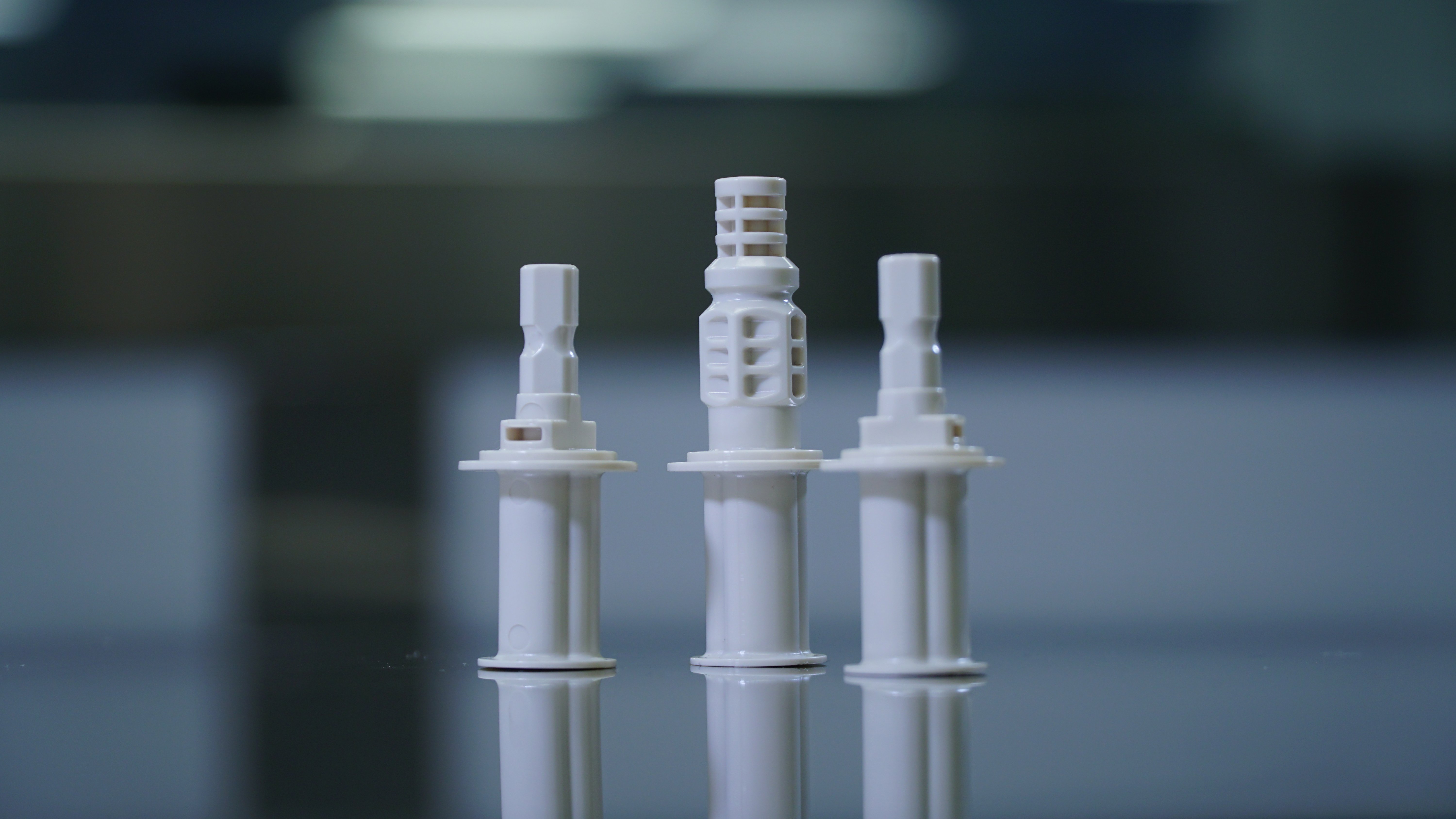Original equipment manufacturers (OEMs) can encounter many issues when producing components, including weld lines. Weld lines occur when there is a line, notch or color change on the molded part caused by the meeting of two separate flows of molten plastic. In many cases, weld lines are unavoidable — and most of the time, they do not weaken the part unless it is processed incorrectly.
However, injection molding manufacturers can take steps during design for manufacturability, material selection, and processing to try to avoid injection molding weld lines, minimize their impact on the component’s appearance, and ensure that they are not associated with part weakness.
Why Do Injection Molding Weld Lines Occur?
In plastic injection molding, raw material is fed into the injection molding press and advanced toward the mold by the injection unit. Then, cooling of the molten plastic inside the mold cavities will solidify into the shape of the part.
When a part design includes a hole, notch, or certain other features, this can divide the flow of plastic into two separate “flow fronts.” The material is flowing in two different streams, which flow around the feature and then come together.
As the two flow fronts meet, the molten plastic from the separate fronts joins or “welds” together and often forms a slight line on the part, similar to a parting line mark. At the spot where the two flows rejoin, there is inadequate interfusing of the plastic. This may be due to the fact that some cooling and then re-solidification of the plastic has already occurred. Or it may happen perhaps on a molecular level the molecules are not oriented in the same direction of the flow path. In either case, the result is a weld line.
Do Weld Lines Matter?
While weld lines can be an aesthetic concern, in most cases, they are not a result of deficiencies in the raw material, mold, or process, and they do not weaken the part unless the part is processed incorrectly.
Can Weld Lines Be Avoided?
In most part designs, the creation of weld lines is unavoidable, especially in designs that require holes. The extent to which they are visible depends on the condition of the mold and the process parameters during molding. That said, weld lines can be minimized with good design, material selections, and processing conditions.
Techniques for Fixing Weld Lines
There are a number of options for minimizing weld lines or moving them to a more desirable location for aesthetic or strength reasons. However, solving a weld line issue can create other, more significant problems. Always consult your plastic injection molding contract manufacturer before considering any of these or other modifications to address weld lines:
- Increasing the temperature of the mold or plastic material. This can allow the two flow fronts to fuse together more completely.
- Changing the gate location. Molten plastic is injected into each cavity in the mold through an opening called a gate. The positioning of these gates affects where weld lines will appear on the part. Before the mold is fabricated, the gates can be positioned so that weld lines are in less prominent or less visible locations.
- Changing the product wall thicknesses during design. Wall thickness affects the time it takes to fill the mold. A shorter or longer fill time can cause flow fronts to meet at a different spot and move the weld line location.
- Adjusting the design to be a single source flow. By altering the part design, it may be possible to just have one flow front, and avoid multiple flow fronts having to come together.
- Reducing the dimensions of the runner system. This can enable the manufacturer to increase the molten plastic temperature at the front of each flow and avoid the occurrence of weld lines.
- Increasing injection speed. Speeding up the flow of material will fill the mold more quickly and ensure the material does not prematurely cool down, which could avoid weld lines. In addition, when the speed is adjusted, the flow fronts may meet at a different spot and move the weld line location.
- Changing the raw material to a plastic with lower viscosity or a lower melting point. These changes have the potential to improve flow properties and minimize or move weld lines.
- To avoid weld lines entirely, consider machining features, such as holes, into the part after the injection molding is completed.
In many cases, predicting the weld line and parting line locations is achieved during design for manufacturability, using computer simulations. Your CM should conduct a thorough DFM process. DFM enables original equipment manufacturers and contract manufacturers to identify current and potential problems and fix them in the design phase, which is the least expensive time to address them.


